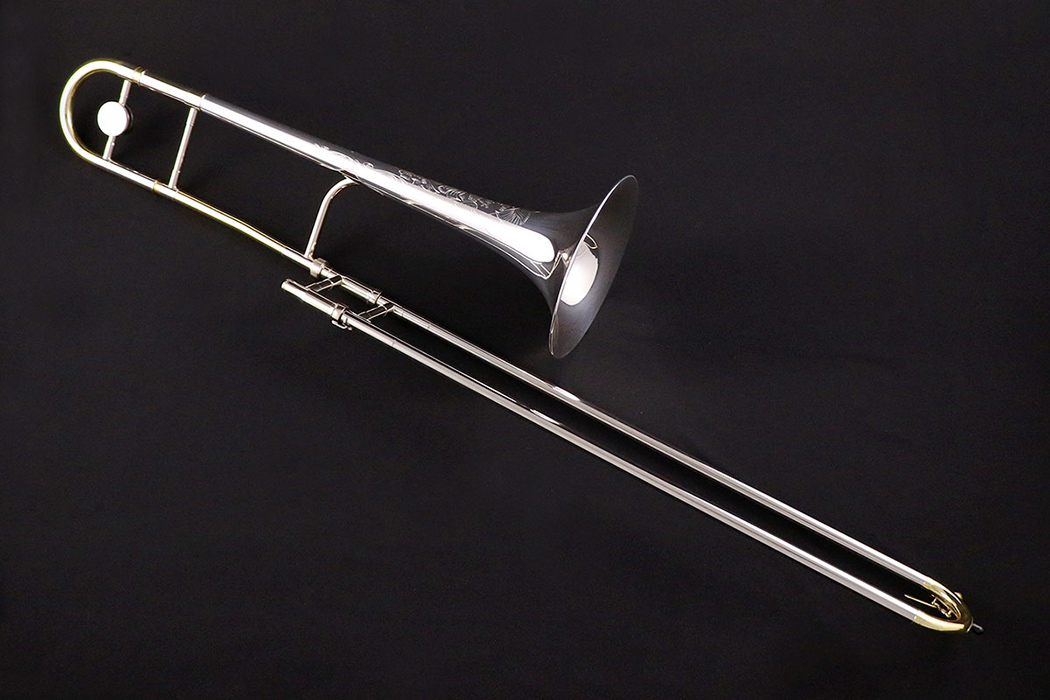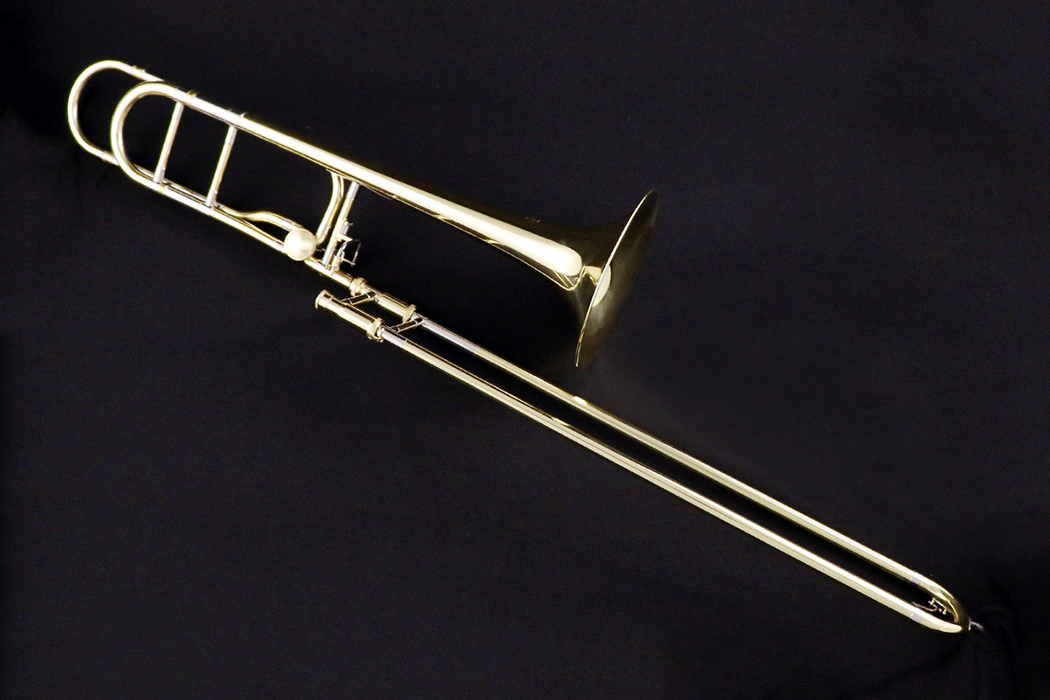Other Terminology
Bore Size
Bore size in brass refers to the diameter of the tubing used in its design; in trombone, it refers to the diameter of the tubing of the inner handslide and is typically measured in thousandths of an inch. There are three different bore sizes for tenor trombone referred to in the trombone community:
Small bore-.480″-.508″.
Small-bore tenor trombones have a smaller, brighter and more focused sound. They are often used in jazz, pop, rock, latin, and other commercial settings. Student trombones are also typically small bore, as they take less air for a younger player and are more responsive for them.
Medium bore-.525″.
Medium-bore tenor trombones have a larger and darker sound then small-bore tenors but not as much as the large-bore tenor. While they often come with F-Attachments, it is also common for them to be without (straight tenors). A medium-bore tenor can sometimes be an excellent gateway for a player looking for a larger sound and response than a small-bore tenor but feel that a large bore tenor is too open, requiring too much air.
Large bore-.547″.
Large-bore tenor trombones have the largest and darkest sounds in the tenor trombone family. The large-bore tenor is the most popular option for trombonists in classical settings (such as wind ensemble, orchestra, brass quintet, solo literature) due to its timbre, broader response and stability at wide dynamics and ranges. With a few exceptions, most large-bore tenors come with F-Attachments. The large-bore tenor is the most popular choice for middle school and high school players looking to move from their student instrument, as they are the most versatile for most school settings (able to work in jazz ensemble, wind ensemble, orchestra, etc.) and they provide the best opportunity to develop one’s overall sound and technique.

F-Attachment
The F-Attachment, sometimes called the “trigger,” refers to an additional set tubing added to the bell section of the trombone. When the air is routed through this additional tubing via a valve, activated by a thumb trigger, it lengthens the trombone, changing its fundamental key from Bb to F, a perfect 4th lower in pitch. The F-attachment allows the player to utilize alternate positions (for example, notes in 6th and 7th position can be played in 1st and 2nd position), enabling them to play fast technical passages or connected legato passages easier. It also allows the instrument to play lower than can be played on a straight trombone (without an F-attachment).
F-Attachments are most commonly seen with medium and large bore tenor trombones. Bass trombones typically have two valves, usually tuned to F and Gb, although F and G, as well as other tuning methods, exist. The addition of the second valve allows the bass trombone to play chromatically through the lower register and provides additional alternate position options.
Valves
One of the biggest innovations in trombone design since the 1970s has been the proliferation of different valve designs used. While the standard rotor design remains the most common, a wide variety of different valves have been developed, including the Thayer/Axial Flow, Kanstul CR, Bach LaRose, Conn CL2000, Rotax, Haagman, Shires Tru-bore, Greenhoe, along with many others.
With any valve design, the manufacturer is working to control how the air passes through the valve and the amount of resistance the airflow experiences both when open (passing straight through the valve and into the bell) and when routing the air through the additional tubing. Depending on the design of the trombone and the preferences of the player, subtle difference in the resistance provided by the valve can change the sound, response, and overall playing of the instrument. Other playing attributes manufacturers take into consideration when designing and utilizing a valve include its response in the lower register; smoothness and continuity when moving in and out of using the valve; and the distance and the amount of force needed to activate the valve (the “throw”).
While certain valve designs have been popular with professional players for many years (i.e. the axial flow valve) we typically find that there is no one perfect valve design; instead, like many other attributes in trombone construction, the best option depends on the player, their needs and how they approach the trombone.

Valves
One of the biggest innovations in trombone design since the 1970s has been the proliferation of different valve designs used. While the standard rotor design remains the most common, a wide variety of different valves have been developed, including the Thayer/Axial Flow, Kanstul CR, Bach LaRose, Conn CL2000, Rotax, Haagman, Shires Tru-bore, Greenhoe, along with many others.
With any valve design, the manufacturer is working to control how the air passes through the valve and the amount of resistance the airflow experiences both when open (passing straight through the valve and into the bell) and when routing the air through the additional tubing. Depending on the design of the trombone and the preferences of the player, subtle difference in the resistance provided by the valve can change the sound, response, and overall playing of the instrument. Other playing attributes manufacturers take into consideration when designing and utilizing a valve include its response in the lower register; smoothness and continuity when moving in and out of using the valve; and the distance and the amount of force needed to activate the valve (the “throw”).
While certain valve designs have been popular with professional players for many years (i.e. the axial flow valve) we typically find that there is no one perfect valve design; instead, like many other attributes in trombone construction, the best option depends on the player, their needs and how they approach the trombone.





